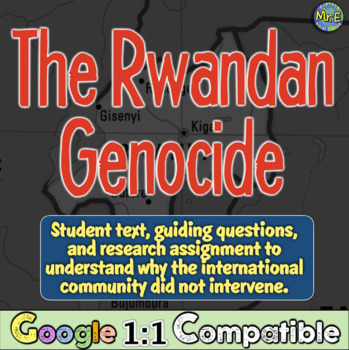Rwandan Genocide Reading Assignment and Research Activity
- Zip
- Google Apps™
- Internet Activities

Description
In this Rwandan Genocide assignment and research activity, students answer guiding questions while learning about the Rwandan Genocide (also known as the Rwandan Holocaust). Students read a guided text that highlights the role of European colonizers (Germany and Belgium) in reinforcing (and perpetuating) a divide between Hutu, Tutsi, and Twa members of Rwanda. Students learn about the 1884 Berlin Conference, the social structure of the Hutu and Tutsi, the 1959 Hutu Revolution, the creation of the Rwandan Patriotic Front under Paul Kagame, and the horrific genocide that took place after the assassination of the Rwandan and Burundi presidents. Students answer guided questions as they understand the underlying causes and events of the Rwandan genocide. Then, in an engaging research assignment, students investigate four links to understand why the international community failed to intervene and stop the tragedy that unfolded in Rwanda.
☆ ☆ This resource is included in my Post War Nationalism bundle, located here!
A teacher key and Google 1:1 version are included!





